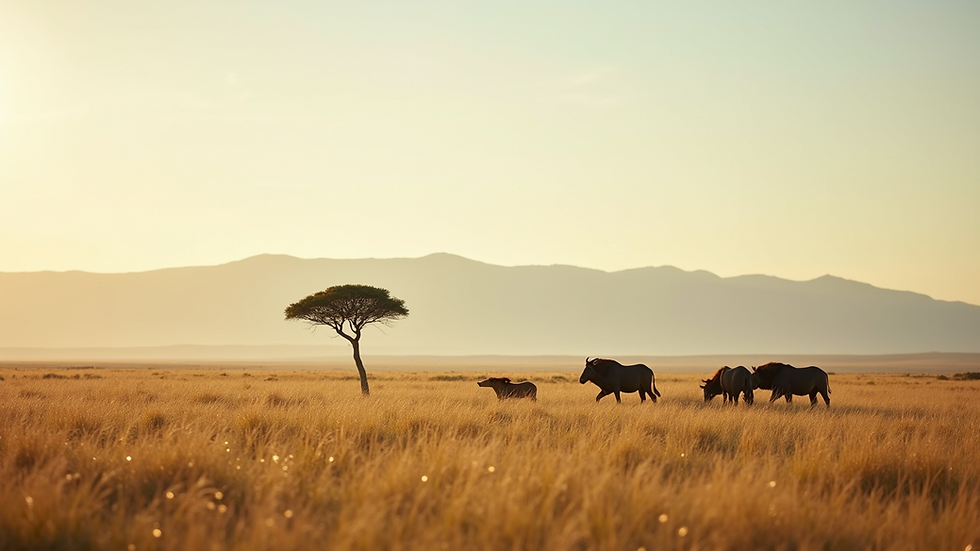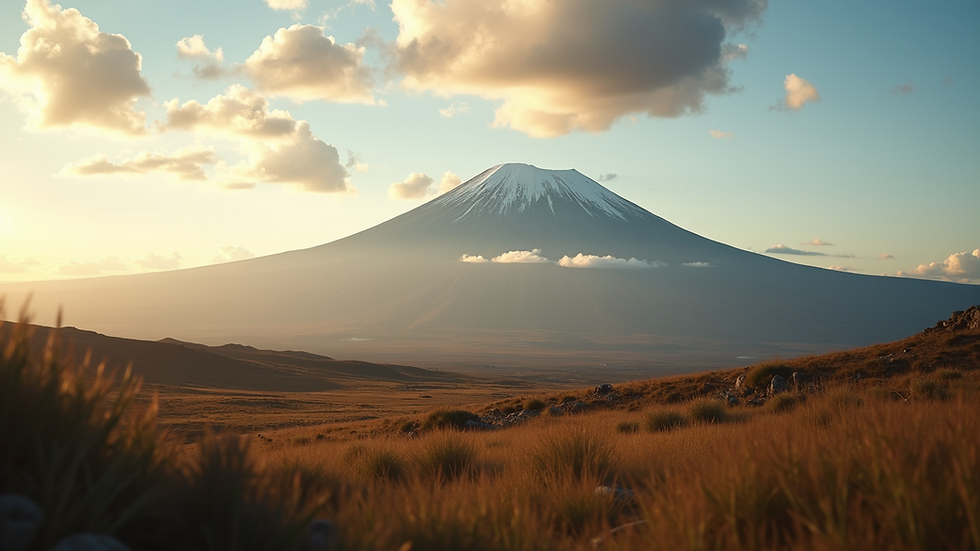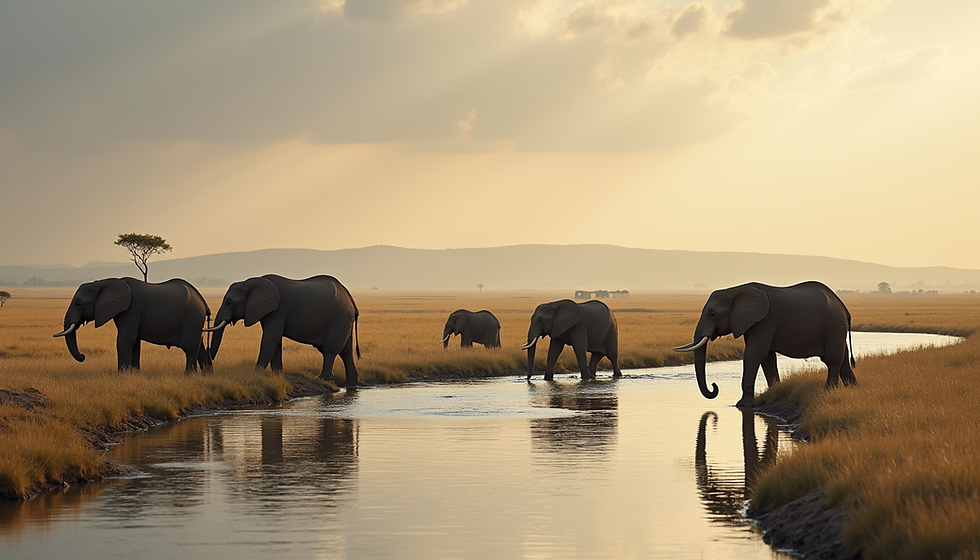Planning Your Ultimate Safari Experience in Tanzania
- SAIL TEAM

- Jul 15
- 5 min read
Tanzania is a country synonymous with spectacular wildlife, breathtaking landscapes, and vibrant cultures. A safari in Tanzania is often dubbed the ultimate experience for nature lovers and adventure seekers alike. From the iconic Serengeti National Park to the majestic Mount Kilimanjaro, a journey through Tanzania presents countless opportunities for exploration, discovery, and unforgettable memories. This blog aims to guide you in planning your perfect safari, taking into account practical tips, top destinations, and essential information for an unforgettable adventure.
Tanzania Wildlife Safari
When planning a Tanzania wildlife safari, the first step is to decide which areas you want to explore. Tanzania is home to several national parks and reserves, each offering unique experiences. The most renowned among them include:
Serengeti National Park - Famous for the Great Migration, where millions of wildebeest, zebras, and other animals roam the plains in search of fresh grazing ground.
Ngorongoro Crater - A UNESCO World Heritage Site and home to an array of wildlife, including elephants, lions, and black rhinos.
Tarangire National Park - Known for its large population of elephants and stunning baobab trees.
Lake Manyara National Park - Features diverse ecosystems and is famous for its tree-climbing lions.
Each of these locations offers different experiences. Research and prioritize the parks that suit your interests, whether it's birdwatching, photography, or simply enjoying the wildlife.

Best Time to Visit
Selecting the perfect time to visit Tanzania is crucial to maximizing your safari experience. The best time for wildlife viewing generally falls during the dry season, from June to October. During these months, animals are easier to spot due to the lack of vegetation and the necessity to head to waterholes.
However, if you're interested in witnessing the Great Migration, the timing varies slightly. The migration begins around April and can last until October, with the best viewing typically occurring in June and July as the wildebeest cross the Mara River.
Be mindful of the rainy season, from November to March, when some parks may become less accessible due to muddy roads. Despite this, visiting during the green season can reward travelers with lush landscapes and a quieter experience with fewer tourists.
Is Tanzania Safari Worth It?
The question of whether a Tanzania safari is worth the investment is easily answered with an emphatic yes! Tanzania's diverse landscapes, rich wildlife, and authentic culture make it an unparalleled destination for adventure seekers.
According to statistics, Tanzania is home to over 4 million animals, making it one of the best spots for wildlife enthusiasts. The unique experience of witnessing the Great Migration or spending time in the Ngorongoro Crater, where wildlife is abundant in a breathtaking caldera, are memories you will cherish forever.
In terms of cost, while a safari can be a significant investment, the value received in terms of experience, education, and adventure is immeasurable. Additionally, many tour operators offer packages that cater to different budgets, allowing for a safari that aligns with your financial constraints.

Choosing the Right Safari Package
When selecting a safari package, you will have various options, such as group safaris, private tours, or luxury lodges. Each of these has its pros and cons, and your choice largely depends on your preferences.
Group Safaris: These are often more economical and offer a chance to meet fellow travelers. However, the experience may be less personalized and can be at times disappointing as they are not tailored to individual interests.
Private Tours: If you prefer flexibility and tailored experiences, a private safari is just the way to go, though it tends to be pricier, you are sure that you are in charge of the flow of your safari and will be done your way with the guidance of our expert consultants.
Luxury Lodges: For those seeking comfort with gourmet meals and superior guiding, consider luxury lodges or high-end tented camps.
Consider what aspects of the safari are most important to you: cost, level of comfort, and group size. Research different operators to find the one that fits your style best. Ensure that the operator prioritizes sustainable tourism practices to support local communities and the preservation of wildlife habitats.
Essential Packing Tips
Packing for your Tanzania safari requires careful consideration of the climate, activities, and duration of your trip. Here are essential items to include in your packing list:
Clothing: Lightweight, breathable fabrics are essential. Pack light layers for cool mornings and warm afternoons. Neutral colors, such as khaki or olive, are recommended to blend in with the environment.
Footwear: Comfortable walking shoes or boots for safari excursions and sandals for relaxing at your lodge.
Sun Protection: Sunscreen, sunglasses, and a wide-brimmed hat are crucial for protection against the sun’s harsh rays.
Binoculars and Camera: Enhance your wildlife viewing experience with binoculars and capture memories with a camera. Encourage the practice of wildlife photography while respecting the animals' space.
First Aid Kit: Basic supplies, including medication for headaches, allergies, and stomach issues, are advisable.
Insect Repellent: Necessary to keep mosquitoes at bay, especially during the evenings.
Packing wisely contributes to a comfortable experience, allowing you to focus on the magic of the landscapes and wildlife around you.

Enjoying Cultural Experiences
While Tanzania’s wildlife is undeniably a highlight, immersing yourself in local cultures can add richness to your trip. Here are a few cultural experiences worth considering:
Maasai Village Visits: Engage with the Maasai people, learn about their customs, and understand their rich heritage. Some tours offer the chance to participate in dances or traditional ceremonies.
Market Tours: Explore local markets, such as the Dar es Salaam Market, for an authentic taste of Tanzanian life. Sampling local foods and crafts provides an insight into the culture and economy.
Culinary Classes: Participate in cooking classes to learn how to prepare traditional Tanzanian dishes. It’s a fun way to dive into local cuisine and bring a piece of Tanzania home with you.
Engaging with local cultures fosters deeper appreciation and understanding, enhancing the overall safari experience.
Additional Tips for a Memorable Safari
To make the most of your safari experience, keep these additional tips in mind:
Stay Hydrated: Carry a refillable water bottle and drink plenty of fluids, especially during hot days spent in the sun.
Respect Wildlife: Maintain a safe distance from animals and follow guidelines provided by your guide. Safety and respect for wildlife should be your top priorities.
Be Patient: Sometimes, wildlife watching requires waiting for the right moment. Enjoy the surrounding environment while you wait.
Stay Connected but Present: While documenting the experience is important, remember to also soak in the sights and sounds around you. Turn off distractions and be present during your safari.
Embarking on a safari in Tanzania is an experience like no other. With meticulous planning and a spirit of adventure, you'll create lasting memories and encounter the wild beauty of this incredible country. Start your journey today and discover why Tanzania is one of the top safari destinations in the world!




Comentários